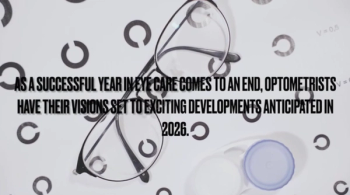
Therapy helps with depression in AMD patients with low vision
A recent study, published in Ophthalmology, found that the incidence of depression in patients with low vision due to age-related macular degeneration can be halved with integrated low vision and mental health treatment.
San Francisco-A recent study,
Each participant in the Low VIsion Depression Prevention TriAL (VITAL) had two outpatient sessions of low vision optometric rehabilitation. Then, patients were randomly assigned to two types of psychological therapy: either six one-hour sessions of in-home behavior activation over eight weeks; or six one-hour sessions of in-home supportive therapy over eight weeks, which served as a control.
Behavior activation promotes self-sufficiency and social connections to improve mood and counter withdrawal. Delivering behavior activation in the context of low vision occupational therapy involves environmental modifications, such as marking specific temperatures on the thermostat with high-contrast markers, and aims to improve functional vision as well as help patients achieve valued personal and functional goals. Nondirective supportive therapy facilitates personal expression about illness, disability, and vision loss.
After four months, the researchers assessed eight variables-including depression, vision status, vision-related quality of life, physical health status, and device use-and found that the incidence of depression was half in the behavior activation group (12.6 percent) than of that in the supportive therapy group (23.7 percent). The rate of depression found in the supportive therapy group was also similar to that reported in the absence of any treatment.
The risk reduction was strongest in participants with worse vision (20 percent) than in participants with better vision (3.4 percent). Behavior activation was also associated with improved near functional vision, but the difference between the two groups was not statistically different. The researchers also found that participants who self-rated their own health lower were associated with a higher incidence of depression regardless of the treatment used, indicating that those with worse health perceptions require more intensive intervention.
Newsletter
Want more insights like this? Subscribe to Optometry Times and get clinical pearls and practice tips delivered straight to your inbox.













































.png)


